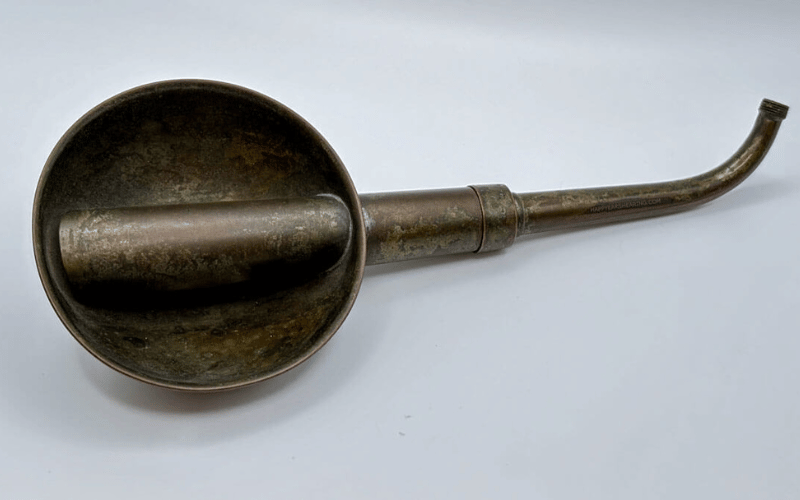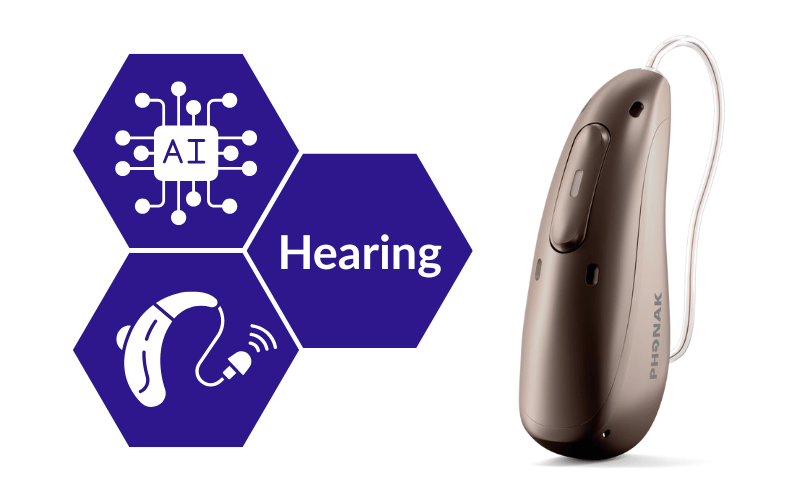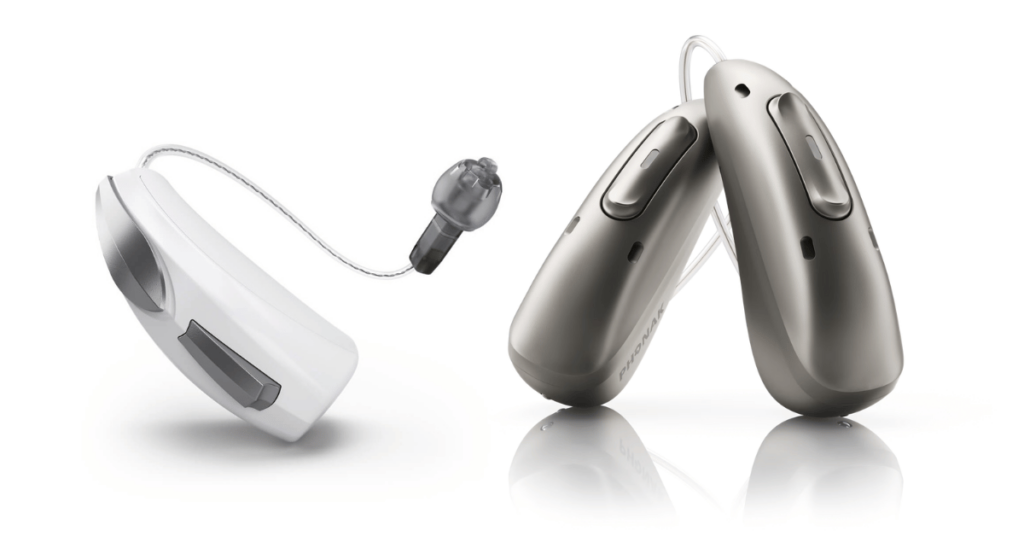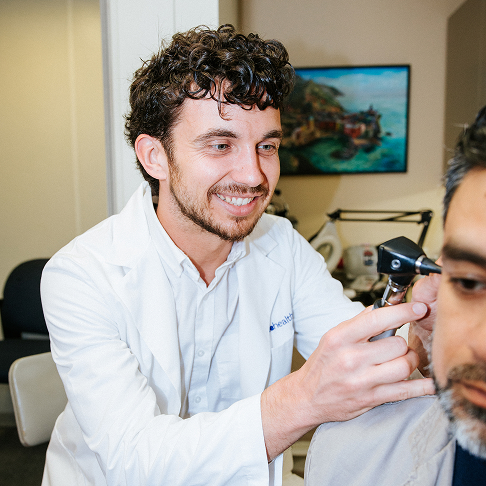Hearing technology is evolving rapidly, and artificial intelligence (AI) is at the center of this transformation. It seems these days, everywhere you go, there’s something being unveiled or discovered about AI. What was once a tool to assist with advanced scientific applications is now becoming a smart assistant, enhancing everyday interactions, and even transforming hearing loss treatment. Tech leaders like Meta, Google, and Apple are investing in AI-driven wearables, pushing hearing aids beyond amplification into the realm of augmented reality and real-time health monitoring.
Hearing technology is much different from what it was one or two decades ago. The difference between then, now, and where it is headed is astounding. In this post, we’ll explore what AI has in store for the hearing health community and how it can improve our everyday lives.
The Rise of AI in Hearing Tech
The global hearing aid market, valued at $13 billion in 2023, is set to expand as AI brings new capabilities. Hearing aids are no longer just about amplifying sound—they are evolving into multi-functional wearable computers. Today’s AI-powered devices automatically adjust to different environments, enhance speech clarity, and filter background noise without any manual input. The result? Effortless hearing that adapts to real life.

The first hearing aids were basic amplification devices dating back to the 16th century, and helped those with mild hearing loss. During this time, people used metal ear trumpets as forms of hearing aids, but they were bulky and awkward. These amplification devices didn’t develop much until the creation of the telephone. This is when we got the first electronic version of the hearing aid in 1898, called the Akouphone. It had a carbon transmitter to amplify sound by taking a weak signal and using electric current to make it stronger.
By the 1920s, wearable electronic hearing aids started becoming popular. They were vacuum-tube hearing aids known as the Vactuphone and weighed just seven pounds. It used the telephone transmitter to turn speech into electrical signals, which would then be amplified for the wearer. WWII brought with it several technological advancements, including hearing aids.
The introduction of transistor technology in the late 1950s revolutionized hearing aids. Transistors were smaller, lighter, required less battery power and could make hearing aids more discreet. Companies like Raytheon and Zenith led the charge into various hearing aid models, with ones that fit behind the ears emerging after the 1960s.
It wasn’t until the 1990s that digital signal processing (DSP) changed sound processing once more. Microprocessors, or computer chips, feature equalization control, where they can adjust the incoming sound according to the frequencies the user has trouble hearing. This technology allowed hearing aids to filter background noise and adjust settings based on their environment. Over the years, models became even more discreet, with longer battery lives, and later models included functions such as, rechargeability, Bluetooth and tinnitus features.
AI started making waves in hearing tech in the 2010s, transforming the hearing aid space once more. More than just sound amplifiers, AI-powered hearing aids leverage machine learning to provide the best listening experience for wearers. They work in real-time and offer a more personalized experience, leading the way forward for hearing health.
How AI is Transforming Hearing Aids
One of the biggest challenges for those with hearing loss is background noise. AI-driven hearing aids solve this by learning from millions of real-world sound environments. They detect the difference between speech and noise, adjusting in real-time to make conversations clearer. The future of AI and hearing aids involves:
- Real-Time Sound Classification– AI allows hearing aids to distinguish sounds in real time, whether that’s regular background noise, speech, music, alarms, or other important sounds. AI can even adjust settings to enhance listening experience based on the sound classification. A prime example is Phonak’s AutoSense OS, which automatically fine-tunes sound settings depending on whether the user is at home, in a busy restaurant, or outdoors. AI is eliminating the need to constantly tweak settings, allowing users to focus on life instead of their devices.
- Speech Recognition and Translation– Future hearing aid technology is expected to incorporate real time speech recognition and potential translation capabilities, allowing hearing aid users to understand more speakers, more clearly, without the need for a translator.

- Smart Integrations with Sound Profiles– AI algorithms learn a user’s preferred sound settings to create sound profiles, adjusting amplification based on those settings and environments, for example, a quiet library versus a noisy restaurant. These profiles are also expected to carry over to smart plugs, smart watches, smart glasses, and other smart devices, for further integration into everyday life.
- Remote Monitoring and Adjustment– AI allows audiologists to remotely monitor what’s going on, and even adjust hearing aid settings without needing their patients to come into the office. Further developments may involve automatic updates based on the user’s environment.
Beyond Hearing: Health and Wellness Tracking
AI-powered hearing aids are not just improving sound; they are also transforming personal health monitoring. AI can collect large amounts of data at once, and offer real-time insights to one’s personal health and well-being. With how rapidly AI tools are advancing, they’re becoming more accessible with each passing day. This is what we can expect from AI innovations in the future beyond hearing:
- Activity and fitness monitoring– Wearables like Fitbits and Apple Watches already use AI to track physical activity, heart rate, and sleep. AI features involve feedback about the intensity and effectiveness of workouts and recovery, fitness levels, and suggestions about lifestyle changes or habits that improve sleep.

- Fall detection– For seniors or those at risk of health issues, this innovation is life-changing. Fall detectors use sensors to detect changes in movement, orientation, and impact. These sensors collect data on the user’s posture, activity level, and any sudden changes in movement that may indicate a fall, and send an alert to a caregiver if necessary. Most of these sensors are wearables, but pretty soon, fall detectors will be optical.
- Preventative care and chronic illness management– Future hearing aids could even predict early signs of dementia or heart disease, serving as an essential tool for preventive healthcare. This involves personalized dietary recommendations for diabetics, portion control image recognition, and diet tracking. AI can predict when the next blood sugar spike is going to be based on diet, activity, and other factors, and offer recommendations. Similarly, it can intervene in the middle of a medical crisis and reach out to a medical professional.
- Stress and mental health management– AI can be used to monitor and detect stress levels, and can suggest useful techniques such as deep breathing and meditation. AI can also predict mood using facial pattern technology, and offer mental health support through Cognitive Behavioral Therapy (CBT)-based techniques.
- Sleep monitoring– Our sleep habits say a lot about us, and tracking that data can unlock a lot of our secrets. With AI, you can discover the restfulness of your sleep, and possibly diagnose conditions such as sleep apnea and other respiratory issues. Sleep disruptions can also indicate medical conditions, medication side effects, stress or anxiety, or that you need to lay off the caffeine/alcohol.
Imagine a device that seamlessly integrates hearing with real-time AI assistance. It could transcribe live conversations, translate foreign languages, and even adjust settings based on voice recognition, prioritizing familiar voices in a crowd. The fusion of AI, health tracking, and smart assistance is redefining what hearing devices can do.
Personalized Sound For a Smarter Future
Not everyone hears the same way, and AI is helping create customized listening experiences. Advanced machine learning enables devices to learn user preferences and adapt sound in real time. Features like augmented reality hearing are emerging, providing live subtitles or enhancing speech in noisy environments. The integration of hearing aids with smart glasses is also on the horizon, creating a seamless blend of vision and sound for a more connected experience.
The AI Revolution In Hearing Care
We are witnessing the dawn of an AI-powered hearing revolution. The days of manually adjusting hearing aids are fading, replaced by intelligent systems that enhance clarity, track health, and personalize sound effortlessly. As AI continues to advance, hearing technology will become more intuitive, making interactions with the world seamless and engaging.
For those who struggle with conversations in noisy environments or want a device that does more than amplify sound, AI-powered hearing aids offer a life-changing solution. As this technology continues to evolve, it’s clear that AI will make hearing smarter, more connected, and more adaptive than ever before. The future of hearing is here, and it’s powered by AI.
Get started on your journey to healthy hearing with a tinnitus quiz designed by expert audiologists at Treble Health. You’re one step closer to finding the answers you deserve.










